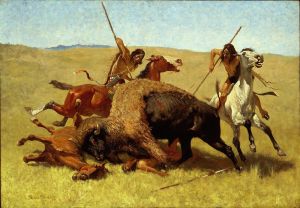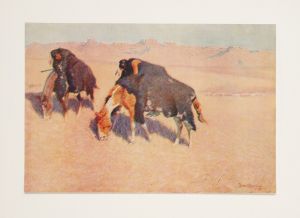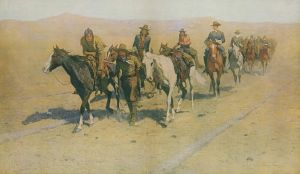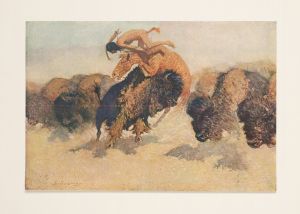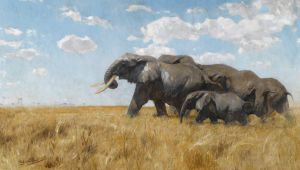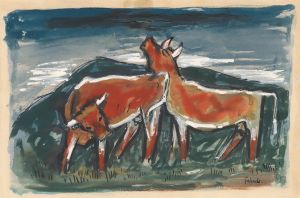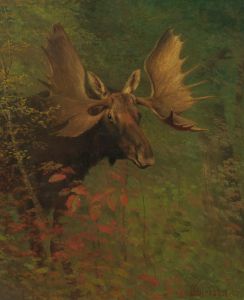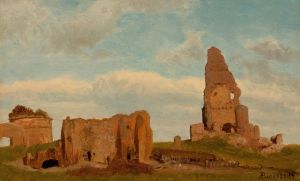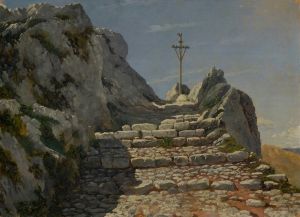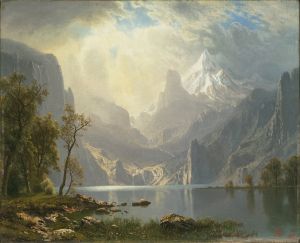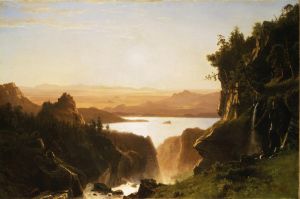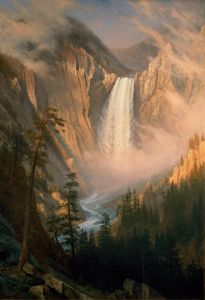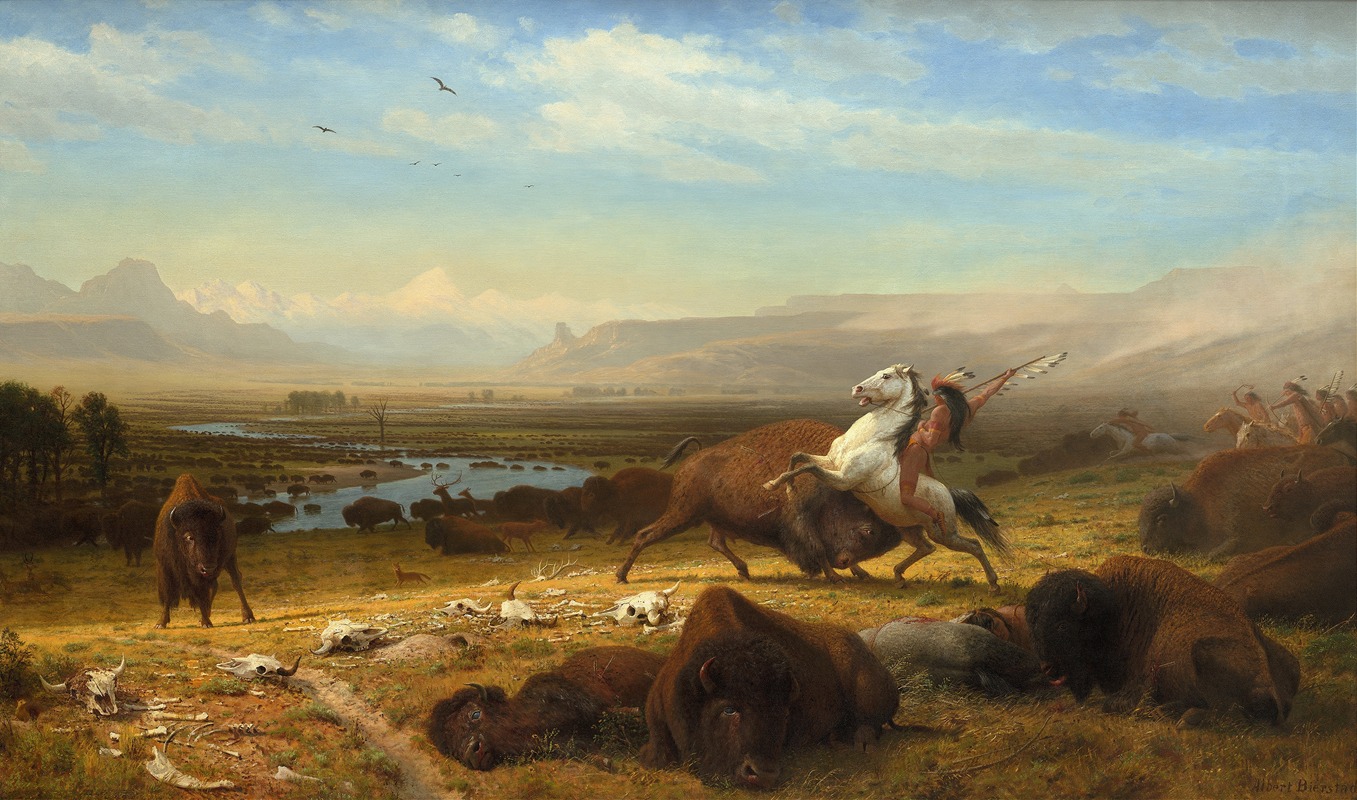
The Last of the Buffalo
A hand-painted replica of Albert Bierstadt’s masterpiece The Last of the Buffalo, meticulously crafted by professional artists to capture the true essence of the original. Each piece is created with museum-quality canvas and rare mineral pigments, carefully painted by experienced artists with delicate brushstrokes and rich, layered colors to perfectly recreate the texture of the original artwork. Unlike machine-printed reproductions, this hand-painted version brings the painting to life, infused with the artist’s emotions and skill in every stroke. Whether for personal collection or home decoration, it instantly elevates the artistic atmosphere of any space.
"The Last of the Buffalo" is a significant painting by the renowned American artist Albert Bierstadt, completed in 1888. Bierstadt, born in 1830 in Germany and later emigrating to the United States, is best known for his grandiose landscapes of the American West. His works are characterized by their dramatic use of light, meticulous detail, and large scale, which capture the majesty and vastness of the American frontier.
"The Last of the Buffalo" is one of Bierstadt's later works and is notable for its poignant subject matter. The painting depicts a scene of buffalo hunting, a practice that had led to the near-extinction of the American bison by the late 19th century. In the foreground, Native American hunters on horseback are shown in pursuit of a herd of buffalo. The composition is dynamic, with the powerful movement of the animals and the hunters creating a sense of urgency and drama.
The painting is set against a backdrop of the expansive plains and distant mountains, typical of Bierstadt's landscape style. The sky is filled with dramatic clouds, adding to the intensity of the scene. Bierstadt's use of light and shadow enhances the realism of the painting, highlighting the textures of the buffalo's fur and the landscape's varied terrain.
"The Last of the Buffalo" is often interpreted as a commentary on the rapid decline of the buffalo population due to overhunting and the encroachment of settlers on the Great Plains. By the time Bierstadt painted this work, the buffalo, once numbering in the millions, had been reduced to a few hundred individuals. This dramatic reduction was a result of commercial hunting, which supplied hides and meat to markets in the East, as well as the U.S. government's policies aimed at undermining the livelihood of Native American tribes who relied on the buffalo.
Bierstadt's painting serves as a historical document, capturing a moment in American history when the natural landscape and its inhabitants were undergoing significant and often destructive changes. The artist's choice to depict this scene reflects his awareness of the environmental and cultural impacts of westward expansion.
"The Last of the Buffalo" was exhibited at the Paris Salon in 1889, where it received critical acclaim. Today, the painting is housed in the National Gallery of Art in Washington, D.C., where it continues to be appreciated for both its artistic merit and its historical significance.
Albert Bierstadt's work, including "The Last of the Buffalo," remains an important part of American art history, offering insights into the country's past and the profound changes that shaped its landscape and peoples. The painting stands as a testament to Bierstadt's skill as an artist and his ability to convey powerful narratives through his art.





